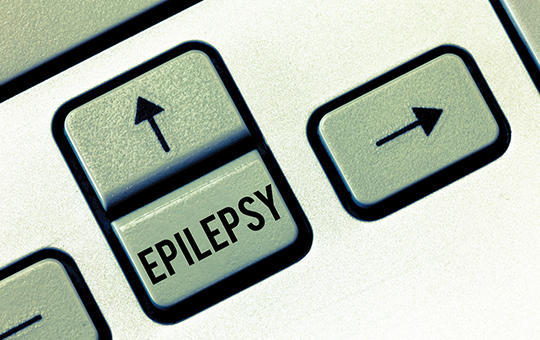The eLitMed.hu medical portal uses computer cookies for convenient operation. Detailed information can be found in the Cookie-policy.
Lege Artis Medicinae - 2024;34(5-6)
Content
[Behavioural and mental symptoms in neurocognitive disorders ]
[Dementia and mild cognitive impairment belong to neurocognitive disorders. Alzheimer’s disease, dementia with Lewy-bodies, frontotemporal dementia and vascular dementia there are most typically in their background. Along with cognitive symptoms, behavioural and mental signs are important parts of its symptomatology, with significant burden for patients and relatives alike. From clinical point of view, behavioural and mental symptoms are multifaceted, diverse, and heterogeneous, their definition and classification is not standardized thus multiple approaches are viable. Complex pathomechanism may hide in the background of these conditions. With biological (neurodegenerative, neurobiological, and other medical) causes, psychogene and social factors can contribute to their clinical manifestation. First, accurate mapping of background factors of symptoms opens the way to individually tailored treatment that may combine non-pharmaceutical and pharmaceutical options. Detailed recognising and complex therapeutic plan provide together the real choice for efficient treatment of behavioural and mental symptoms. ]
[Clinical features of familial hypercholesterolemia patients in Hungary’s Northern Great Plain region – significance of the familial hypercholesterolemia registry ]
[Familial hypercholesterolemia (FH) is an inherited metabolic disorder associated with elevated total cholesterol and LDL-C levels and early cardiovascular complications. Recognizing and identification of additional risk factors, and the early, efficient lipid-lowering treatment is of pre-eminent importance. Thus, we aimed to evaluate specific regional data of the FH registry in Hungary.
We collected anamnestic data, results of physical examinations, laboratory parameters and achieved lipid values after the lipid lowering treatment of 192 FH patients. While diagnosing FH, we applied the Dutch Lipid Clinic Network criteria.
We enrolled 140 females and 52 males with average mean age 49.4 ± 15.7 ys and mean BMI 25.8 ± 4.5 kg/m2. They had in 38.5% hypertension, 2.1% type-2 diabetes and 12% smoked tobacco. At diagnosing, the initial total cholesterol was 8.92 ± 2.71 mmol/L and the LDL-C was 6.04 ± 1.9 mmol/L. Genetic tests supported the diagnosis of FH in 53 cases (27.6%). 110 patients (57.3%) were treated with statin, 80 (41.7%) with ezetimibe, and 26 (13,5%) with PCSK9 inhibitors. 45 patients (23.4%) had definitive statin intolerance. Achieved total cholesterol after lipid lowering treatment was 5.86 ± 2.15 mmol/L (–34.3%), while LDL-C was 3.42 ± 1.69 (–43.4%) mmol/L
Number of registered FH patients was markedly lower than estimated by the prevalence data. Due to the high frequency of statin intolerance and partly by omitted administration of effective lipid lowering medication for cost curbing reasons the lipid level goals did not succeed.
]
[Epilepsy in women – Part 1 ]
[Epilepsy is a chronic neurological disease characterized by unprovoked recurrent seizures that can be easily treated nowadays. The disease affects about 0.6% of the adult population – 25000-30000 women in Hungary. The interaction of seizures and hormonal changes can cause problems in the lives of women with epilepsy. Catamenial epilepsy is defined as doubling of the seizure frequency with menstruation, and adjuvant medication taken in the perimenstrual phase do not replace a well-adjusted treatment. Estrogens have pro-, gestagens have anticonvulsant effect. Antiepileptic drugs also have a significant impact on contraception, pregnancy/breastfeeding and bone health. Enzyme-inducing antiepileptic drugs should not be used in combination with oral contraceptive pills, vaginal rings or transdermal patches. Hormonal contraceptives containing synthetic estrogens can reduce lamotrigine levels by up to 50%. The intrauterine device is the most effective form of reversible contraception, and it is free of drug interactions. A common cause of infertility is polycystic ovary syndrome, a valproate-related disorder. In women taking enzyme-inducer antiepileptics, bone density should be monitored, and vitamin D supplementation should be indicated. ]
[Targeted therapies in rheumatology practice: advantages and disadvantages ]
[The clinical picture of inflammatory and autoimmune diseases is shaped by the network of proinflammatory cytokines and their receptors, and by the specificity of associated intracellular signal transduction proteins. Pathomechanisms and tissue responses of autoimmune, immune-mediated inflammatory and autoinflammatory pathologies and syndromes generate complex and multifaceted symptom complexes. Cytokine signalling is structured hierarchically, with well identifiable nodes and branches. Elements of the system are in dialogue and in homeostatic self-regulatory interrelations. The cytokine network and clinical pictures may be represented as a matrix. Autoaggressive dysregulation results in pathologic conditions. The innovative, targeted therapy means pharmacological inhibition of central players in pathogenesis. Its tools are engineered complementary protein macromolecules (genetically engineered monoclonal antibodies and receptor analogues or fusion proteins), further small molecule enzyme inhibitors engineered also for targeting. By unprecedented efficacy and manageable toxicity, they change profoundly the nature of target diseases and result in near-remission or similar conditions. This study presents the targeted mechanisms and diseases, further the inhibitory pharmaceutical products. ]
[Artificial intelligence for general practitioners – Literature review ]
[Huge amount of data is generated while providing health care. Yet, there was the same huge progress in processing large databases with technological development of artificial intelligence in the recent years. Practical applications of artificial intelligence are increasingly established in healthcare, including the family medicine too. This study provides an overview of the international literature on artificial intelligence applications in family medicine. Complex, connected systems do not exist for the time being. Mainly the prediction of specific diseases (e.g., chronic kidney failure, diabetes mellitus, dementia, etc.), facilitating the data management, and supporting decision-making mechanisms are tested actually by specific methods of artificial intelligence for experimental reasons. The rate of technological progress is enormous, but with enthusiasm about the future, we must also be aware of potential dangers of this technology. ]
1.
Clinical Neuroscience
Is there any difference in mortality rates of atrial fibrillation detected before or after ischemic stroke?2.
Clinical Neuroscience
Neuropathic pain and mood disorders in earthquake survivors with peripheral nerve injuries3.
Journal of Nursing Theory and Practice
[Correlations of Sarcopenia, Frailty, Falls and Social Isolation – A Literature Review in the Light of Swedish Statistics]4.
Clinical Neuroscience
[Comparison of pain intensity measurements among patients with low-back pain]5.
Journal of Nursing Theory and Practice
[Fear of Falling among Geriatric Patients: a Narrative Review]1.
2.
3.
4.
5.
















